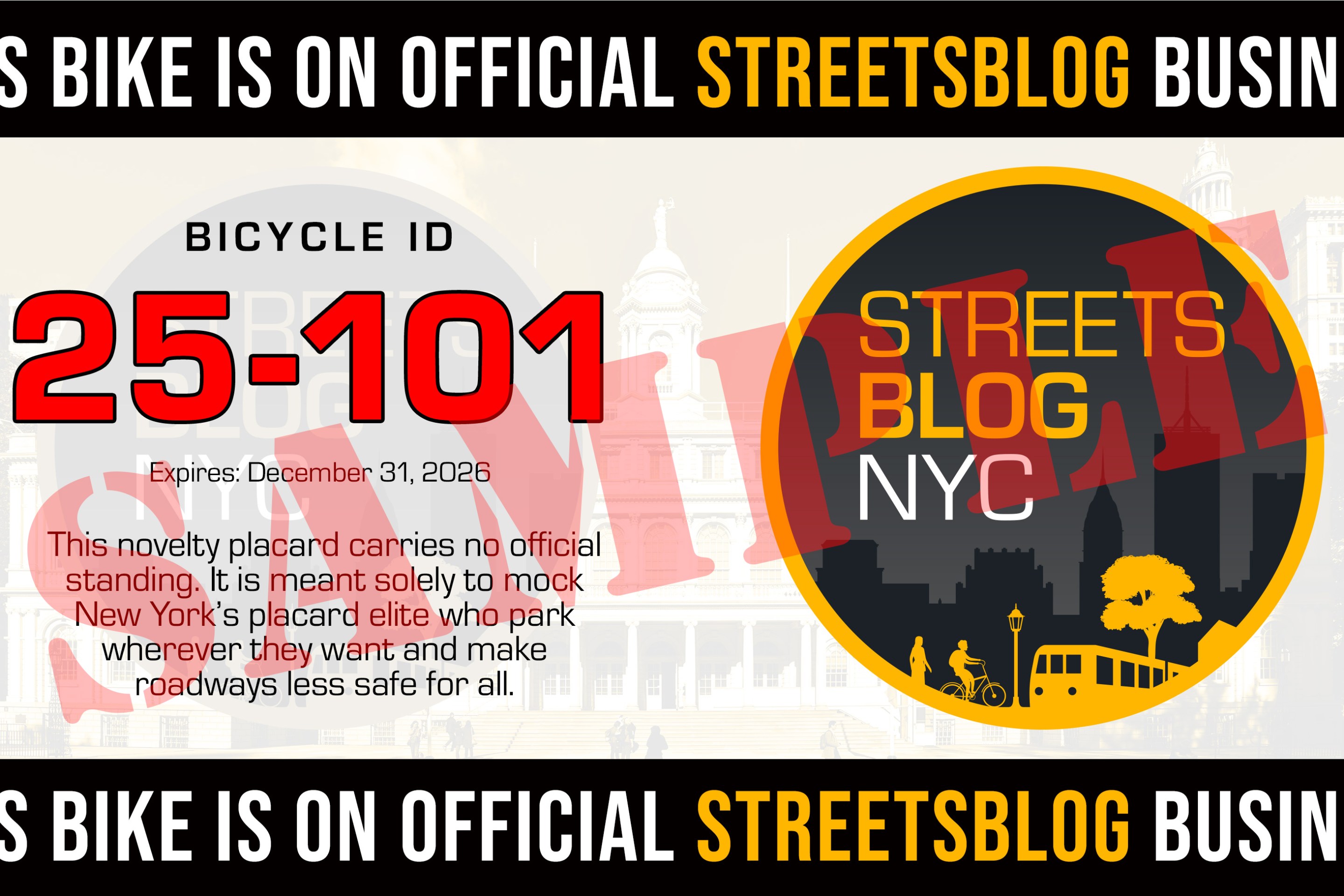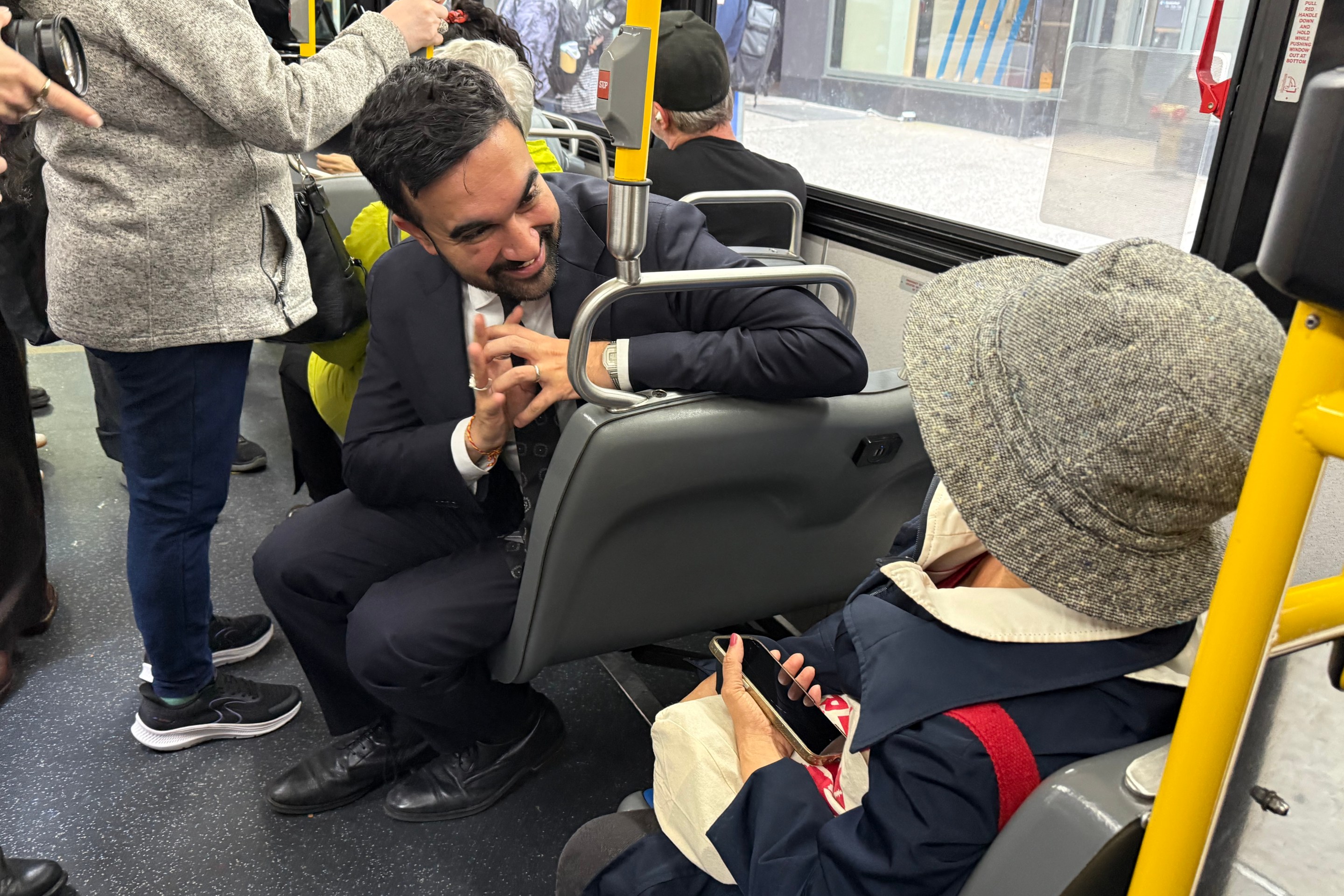 Local activists have made Williamsburg's New Domino a little less auto-centric. Image: The New Domino
Local activists have made Williamsburg's New Domino a little less auto-centric. Image: The New DominoHow few parking spaces should be attached to new developments to make New York a more sustainable city?
That's the big question for developments like Brooklyn's New Domino, the huge project slated for the Williamsburg waterfront where developers originally proposed 1,694 parking spaces for about 2,400 residences. Neighborhood activists recently won a 266-space reduction in the amount
of parking but still face an onslaught of new automobiles.
Last week, the City Planning Commission approved the New Domino in a unanimous vote. One of the only changes the commission demanded from the project's developers was to eliminate one parking lot, reducing the number of parking spaces from 1,694 to 1,428. The 266-space reduction was not based on studies or research. It came straight from a request by Borough President Marty Markowitz.
While the reduction was a victory for livable streets, the fact that more than 1,400 parking spaces remain highlights the immense disconnect between the developer's initial proposal and goals like reducing traffic or encouraging sustainable transportation. To make the Williamsburg waterfront a
real beacon of sustainable planning, it's clear that the New Domino
would have to include substantially fewer than 1,428 spaces.
"It's still going to be an auto-oriented
development," said David King, a professor of planning at Columbia
University who specializes in parking. "1,400 is just a lot of parking
spaces, however you cut it."
"In the Department of City Planning, there's a group that thinks New York City will collapse on itself if you stop attracting families with cars."
The local community board and Council Member Stephen Levin had asked for even larger reductions in parking. When Community Board 1 requested fewer parking spaces, their resolution
called for "a level significantly less than the maximum allowed under
zoning," or 1,541 spaces, according to land use committee chair Ward
Dennis. Dennis wouldn't speak for the board as to whether 1,428 was
"significantly" less than 1,541.
So how, at New Domino or in any big project down the line, would you figure out the right amount of parking?
"That's a community decision," argued Rachel Weinberger, UPenn professor and parking policy expert. "It's a vision thing." According to Weinberger, the transportation effects of off-street parking are fairly well-documented, so setting parking levels is a matter of deciding which outcomes you want.
Attaching guaranteed parking spaces to housing is one of the fastest ways to ensure that residents drive, she said, pointing to "Guaranteed Parking, Guaranteed Driving," a report she co-authored for Transportation Alternatives in 2008, as well as more intensive research she is currently conducting. Accordingly, asking how much parking to include is another way of asking how much congestion, environmental damage and danger to pedestrians a community is willing to tolerate in return for making driving more convenient.
Exactly how many car trips are generated by each off-street space is "an impossible to answer question," said Weinberger, because "it's such a dynamic system." But it's perfectly clear that every space eliminated leads to fewer trips by car.
King agreed, saying that at a parking-laden site like New Domino, "people may not be likely to drive into Midtown Manhattan, but they'll keep a car and drive for all their other trips." That residential parking leads to more driving, he said, is increasingly well-established. If your only goal is to reduce the number of cars on the road, he added, "there shouldn't be any parking built whatsoever."
While the effect of building less parking on traffic is fairly clear, the effect on the real estate market is less so. That's where things get interesting. Would enough people buy or rent parking-free apartments to make them commercially viable? Or would less parking squelch growth in green, transit-rich NYC?
Both King and Weinberger argued that to really understand how to set off-street parking levels, we need market research about the demand for car-free housing in New York. "We have no idea what would happen if there was no parking" at New Domino, said King, "because no one has built anything on that scale recently." If you really couldn't sell parking-free housing, the right amount of parking for new developments would necessarily be higher than zero.
Of course, looking at neighborhoods with scarce parking just across the river, like Alphabet City, added King, "I suspect it would work out just fine" at a site like New Domino. Older Brooklyn neighborhoods have very low off-street parking levels and very high real estate prices. In Park Slope, only five percent of car owners store their cars at home.
But the institutions pushing more off-street parking on New York City, King and Weinberger argued, do so because they assume that successful development requires more parking. In the Department of City Planning, said Weinberger, "there's a group of people that think that New York City will collapse on itself if you stop attracting families with cars." If you could show that big projects like New Domino would fill up even without parking, though, they might be less interested in off-street parking.
King speculated that another group might be the best target for market research: Banks. "There's no bank that's going to finance an experiment," he said, "so if the banks won't finance them, the developers won't build them." At privately financed projects like New Domino, the bank's influence is direct, but the financial sector could also influence how much parking a public agency like the city's Economic Development Corporation decides to include in its projects, said King.
Market research -- or better still, demonstration projects -- would help determine how the New York market would respond to large developments with parking levels in line with the city's older neighborhoods. That's an answer you need to know to figure out the "right" amount of parking in a place like New Domino.





